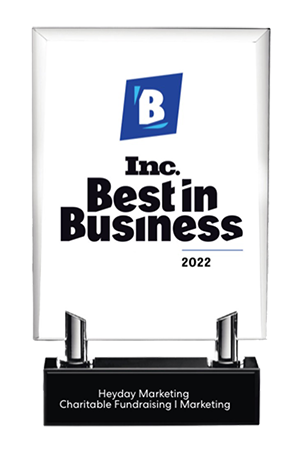Having some kind of marketing plan has become a basic feature of any successful business. The fact is, that modern business practices demand some form of a marketing plan or marketing campaign. To achieve this end of your business, you will likely need to write a request for proposal, or RFP, to find a marketing agency to fulfill your marketing needs.
A request for proposal is a way of opening the field for potential marketing professionals to bid to provide your company with a marketing plan. These plans can range from highly specific projects like SEO to broad and general marketing campaigns that boost your visibility on all media.
For some business owners, the process of developing a request for a proposal can be mysterious. After all, people start their businesses to provide products and services. They are experts in their specific fields, not marketing experts. The various components of a request for proposal can therefore be daunting for many business owners.
What is a request for proposal (RFP)? What is involved in an RFP? And what are the benefits of a good RFP? This guide will provide you with the basic information on a request for proposal and how your business can benefit from an RFP.
What Is a Request for Proposal (RFP)?
A request for proposal is a document designed to gather bids from marketing professionals who can help you develop a marketing campaign for your business needs. An RFP is a method for helping a new or expanding company develop strategies to general a larger customer base and break into new customer demographics.
The real object of a request for proposal is to get as many proposals as possible to you can weigh the benefits and disadvantages of all of them toward achieving your business goals. Each marketing agency will submit its ideas for your marketing issues, its marketing campaign plans, and the cost of these plans. From this, you can evaluate which will work best according to your needs and your budget.
What is involved in an RFP?
Drafting an RFP is basically a two-step process. To get the most out of your RFP, you need to have a research and planning phase and a drafting and refining phase. To get the results you need, your request for proposal needs to pack a lot of information into a tight and concise document. The elements of an RFP include:
Research and discovery. Before you begin drafting your RFP, it is essential that you go through an internal planning session to gather as much information as possible This research and discovery phase is both internal and external. You need to take stock of your internal needs as much as you need to be fully aware of the kinds of marketing campaigns that could be available for you. The things you need to bear in mind include:
- Establish project goals and boundaries. This would include a realistic timeline and an estimated budget.
- Who will be involved in the management and execution of the RFP process? Which individuals within your business or organization will evaluate bids, manage project-specific tasks, and oversee the drafting process.
- Consider how the process of following through on the marketing plan will impact the rest of your business. How might this process impact your overall budget? Will the process have an effect on internal teams and relationships with other businesses?
- Other things to consider are how you will evaluate bidders, who will be involved in this process, and how to finally implement the marketing plan.
Draft and issue the RFP.
Drafting the RFP is the most crucial phase of the process. The draft must be finely detailed while clear enough to convey precisely what your needs are. The more thorough your RFP document, the better your results in the bidding end of this process.
Most experts suggest looking at examples of successful RFPs. Find examples online and pay close attention to things like organization and order. This will help you organize your own materials in ways that fit an already existing formula. Obviously, you will need your RFP to grow directly out of your organizational needs but looking at the ways others have succeeded is the best way to get started with the drafting process.
Things that need to go into an RFP include:
- Background information
- A detailed description of the project
- Specific requirements about preferred systems, tools, materials, or products
- Project deadline along with explicit dates and milestones
- Any questions you would like the potential vendors to answer or materials to submit
- Evaluation criteria
- Possible roadblocks
- Guidelines for submitting the proposal
Why is RFP important?
The importance of an RFP is measured largely in the results you get from drafting and sending one. With a good RFP, businesses and organizations can get a detailed picture of what marketing firms do to address their marketing needs and goals.
An RFP makes it possible to demonstrate transparency in the process of hiring a marketing firm. This is especially important for non-profit organizations and government agencies. A detailed RFP shows people outside your business or organization that you evaluate marketing bids based solely on the needs of your company.
An RFP also helps you measure and evaluate benchmarks for progress. By listing and detailing specific needs and goals from the outset, you can better evaluate the ways a marketing campaign is meeting those goals. You have the standard already in place before the process even begins.
Requirements for an RFP
There is a basic formula for what should be in an RFP. While everyone will have needs and goals that are specific to their organization, the basic list of requirements for an RFP should include:
A clear and direct statement of purpose.
A detailed and clear description of the project goals and the kinds of results you want to see.
Criteria for evaluation. This should be a rubric or formula for how you intend to evaluate submitted bids. This helps bidders understand not just the requirement for bids, but also the limits of what they should include in their bids.
Some experts suggest including a list of preferred things you would like to see in a marketing bid. This is similar to the “preferred qualifications” you see in job ads that are in addition to requirements. This allows bidders to add some things to the bid that may be over and above the officially stated needs.
A timeline for when evaluation of bids will begin. Give people a deadline to get their bids into your project. You should also include a deadline for completion of the project for successful bidders. Do not leave timelines open-ended. This just leads to confusion for everyone involved.
Benefits of an RFP
There are reasons why a request for proposal has become a standard business practice. The benefits of an RFP are well established. Some of the benefits of an RFP include:
Helps meet organizational needs.
The first order of business for an RFP is to find a marketing firm that meets the needs of your business or organization. This means taking stock of your own organizational needs, reviewing policies, and taking stock of your own business practices. An RFP is an opportunity to review organizational needs. By doing this kind of internal research, you are in a much better position to find a marketing firm that meets these needs.
Transparency and accountability.
Going through the process of assembling an RFP is one of the best ways to provide transparency and accountability for your business or organization. The information provided in an RFP and made public through the RFP submission process makes it clear that your business is free of things like favoritism and nepotism. Marketing firms can be certain that you are awarding the bid that meets your needs. This is just a simple assurance of good governance within your business or organization.
Ensures project success.
The process of drafting an RFP necessarily means you are laying out specific goals and specific ways of achieving these goals. These pieces of the RFP become ways to measure the success of your marketing campaign. You already have a list of points to evaluate the marketing campaign, and you already have an established timeline for completion.
RFP template
As noted above, RFPs are now a standard business practice. To be competitive, you must have a marketing plan. Part of a marketing plan involves writing an RFP. A standard format template for an RFP looks like this:
Enter your email to get the PDF
RFP Common Questions
What Is a Request for Proposal (RFP)?
A request for proposal is a document designed to gather bids from marketing professionals who can help you develop a marketing campaign for your business needs. An RFP is a method for helping a new or expanding company develop strategies to general a larger customer base and break into new customer demographics.
What is involved in an RFP?
Drafting an RFP is basically a two-step process. To get the most out of your RFP, you need to have a research and planning phase and a drafting and refining phase. To get the results you need, your request for proposal needs to pack a lot of information into a tight and concise document. This process involves researching your internal workings and taking stock of the marketing firms that could meet your needs.
What are the benefits of an RFP?
An RFP can help you provide organizational structure, ensure transparency and accountability, and help ensure project success.
Why is RFP important?
The importance of an RFP is measured largely in the results you get from drafting and sending one. With a good RFP, businesses and organizations can get a detailed picture of what marketing firms do to address their marketing needs and goals.
As you can see, the process of writing and submitting an RFP can be quite involved. While the format for an RFP is nearly standardized at this point, the actual processes that go into assembling the correct information for an RFP are unique to your company. It can be useful to turn the RFP process over to professionals.
If you need a marketing agency, or if you need professionals who know how to write excellent marketing RFPs, HeyDay Marketing can provide Marketing Agency Service Integration to help you assemble the correct things you need to formulate a successful marketing RFP.
As you can see from this guide, there is a lot that goes into a marketing request for proposal. To get the results you need to launch a successful marketing camping, you can leave things to professionals who are knowledgeable and will invest themselves in the success of your company. HeyDay Marketing Services provides public relations services that will help your business grow with professional and knowledgeable Marketing Agency Service Integration.
HeyDay Marketing Services can build a Marketing Agency Service Integration that will allow you to find the kind of marketing agency and marketing strategy that will build your company. Whether you need help with SEO, social media exposure, or to increase your visibility on web searches, HeyDay Marketing Services and Marketing Agency Service Integration can help you position your business for increased growth and profit.
HeyDay Marketing Services offers Marketing Agency Service Integration that works for your company. We understand that one size does not fit all. For sound public relations strategies that work, allow HeyDay Marketing Services to take over the public relations for your business.







